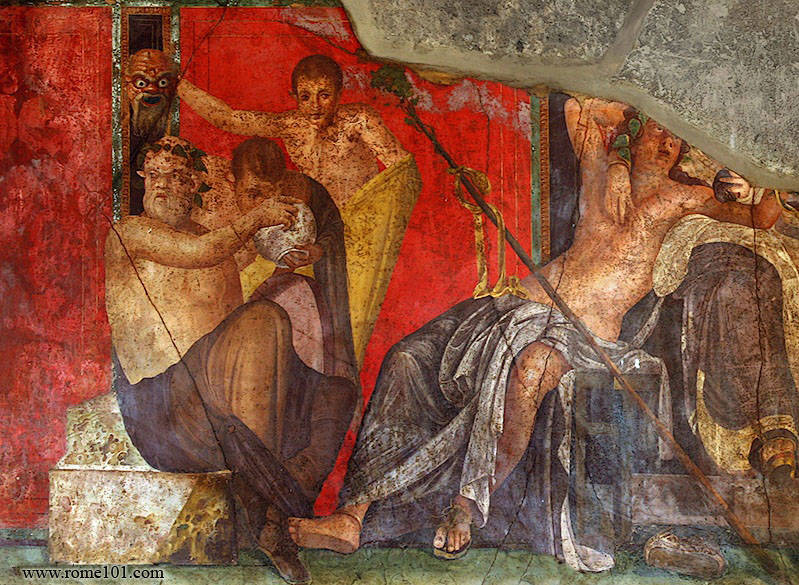Pompeii's Villa of the Mysteries Finally Restored after Two Years
Mount Vesuvius erupted in 79 AD, covering the ancient Roman town-city Pompeii in a layer of over 30 feet of volcanic ash and pumice. Because no air or moisture could reach the objects that lay beneath the destruction, they were well preserved. These artifacts give insight into the life of a city that existed over a thousand years ago.
The Villa of the Mysteries, or Villa dei Misteri, is a well preserved ruin of a suburban Roman Villa that lies northwest of Pompeii. Most of the walls, ceilings, and frescoes survived. The villa is named after the vibrant paintings in the triclinium, or formal dining room.
The most prominent interpretation of these frescoes is the initiation of a woman into the cult of Dionysus, a mystery cult that required rituals to become a member. Mystery religions never revealed the details of their initiations or practices, so most of the information about them is taken from images and descriptions.
The Villa of the Mysteries had rooms for dining and entertaining. There were also areas for pressing grapes into wine, several large kitchens, baths, shrines, and marble statues. When the Villa was excavated in 1909, a wine-press was found and restored.
Other artifacts seem to suggest the possible owner of the Villa. Scholars have proposed that L. Istacidius Zosimus, a member of the powerful Istacidii family, was the owner, because a bronze seal was found in the Villa with his name on it. However, a statue of Livia, wife of Augustus, was also found there, and some historians claim her to be the owner.
By 79 AD, however, the house was already 200 years old and probably had several different owners. The Villa of the Mysteries had already been heavily restored after a large earthquake hit Pompeii in 62 AD, damaging many buildings.
Similarly to Pompeii, many bodies were found in the Villa of the Mysteries, and plaster-of-Paris casts were made of them. It took archeologists two decades to completely excavate the property.
During the 1930s, there were efforts to restore the villa’s floors, walls, and frescoes. However, the restoration techniques applied to the frescoes inflicted damage over the years. Wax was used to preserve the frescoes, but it faded the colors of the images.
New restoration work began in May of 2013 with teams of archeologists, architects, chemists, and physicists to remedy damage done by earlier conservators and time. The new technique first identifies the nature of the chromatic alterations and other damage done over time on the frescoes, and then performs the restoration. The detailed mosaic floor decorations were also restored.
The Villa of the Mysteries is set to fully reopen on March 20, after two years of restoration. The restoration was funded by the Special Superintendency for the Archeological Heritage of Naples and Pompeii (SANP). The work was done gradually in the 70 rooms so that parts of the Villa of the Mysteries were still open to the public.







































i-Italy
Facebook
Google+
This work may not be reproduced, in whole or in part, without prior written permission.
Questo lavoro non può essere riprodotto, in tutto o in parte, senza permesso scritto.